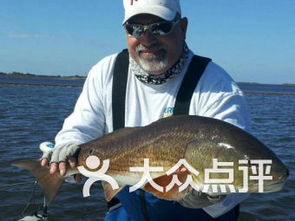Content:
Rainy days can often be perceived as a hindrance to outdoor activities, but for the intrepid angler, they present a unique opportunity to catch some of the biggest fish of the year. The increased water flow and cooler temperatures can make fish more active and less cautious, leading to some excellent fishing opportunities. Here are some essential techniques to help you master the art of catching big fish on a rainy day.
Choose the Right Spot
- Look for areas where water flows more slowly. During heavy rain, fish tend to seek out shelter in quieter spots such as behind rocks, logs, or in deeper pools.
- Focus on tributaries or slower sections of rivers where fish may congregate during the downpour.
Use the Right Equipment
- A sturdy rod and reel are essential to handle the increased force of the water. Opt for a rod with a medium to heavy action to handle larger fish.
- Use a strong line that can withstand the strain of fighting a big fish in the often murky waters of a rainy day.
Adjust Your Lure Selection
- Bright and colorful lures can be more effective on rainy days as they stand out against the darker water.
- Consider using lures that mimic natural prey, such as worms, minnows, or crayfish, as these can be more appealing to fish in low-light conditions.
Timing is Key
- Fish are often most active just before or after a heavy rain. Try to fish during these periods when the water is less turbulent and fish are more likely to feed.
- Keep an eye on the weather forecast and plan your fishing trip accordingly.
Understand the Behavior of Fish
- Rainy conditions can cause fish to move to deeper, more stable waters. Look for deeper holes or submerged structures where fish might be holding.
- The increased water flow can also push food down to the bottom, making it more accessible to fish. Look for areas where you can target these feeding fish.
Adjust Your Technique
- Fish may be more sensitive to vibrations and sounds during a rainstorm. Use a gentle retrieve or allow your lure to drift naturally to reduce disturbances.
- Be patient and give your lure time to work. Big fish can be slow to react, so it's important to wait for the right moment to set the hook.
Keep Your Equipment Clean
- The increased sediment in the water can quickly clog your line and lures. Regularly check and clean your equipment to ensure it's working efficiently.
- Use a brush to clean your lures and a soft cloth to wipe down your rod and reel.
Safety First
- Always prioritize safety when fishing in rainy conditions. Wear appropriate clothing to stay dry and protect yourself from the elements.
- Be aware of your surroundings and the potential for slippery surfaces, especially when walking along riverbanks.
Be Mindful of the Environment

- Rainy days can cause water levels to rise quickly, so be cautious when accessing rivers or streams.
- Respect the natural environment and follow Leave No Trace principles to minimize your impact on the area.
Practice Patience and Persistence
Catching big fish on a rainy day can be challenging, but it's also incredibly rewarding. Stay patient and persistent, and remember that the biggest catch often comes with the most effort.
By applying these techniques and maintaining a keen awareness of the conditions and the fish's behavior, you'll be well on your way to catching some of the biggest fish of the year during those rainy days. Remember, the art of fishing is as much about understanding the environment as it is about skill and patience. Happy fishing!












